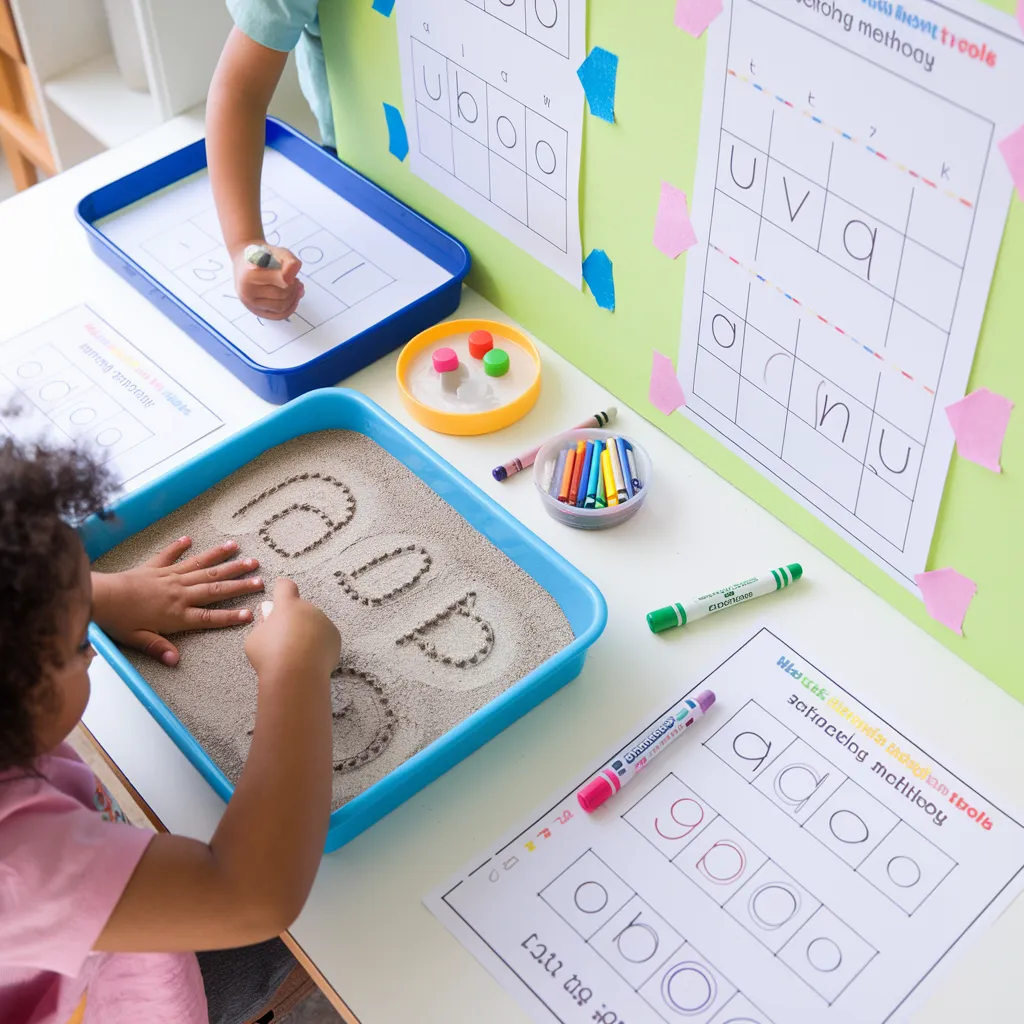Those tiny hands gripping crayons with determination. The look of concentration as little fingers follow dotted lines. The proud smile when a letter or shape finally resembles what it should. These precious moments of early learning often happen over simple tracing worksheets for preschoolers, humble tools that play a remarkable role in childhood development.
Tracing activities might seem basic at first glance, but they serve as foundational building blocks for numerous skills that children will use throughout their lives. From developing the fine motor control needed for writing to building the visual perception skills essential for reading, these simple exercises offer tremendous developmental benefits packaged in fun, accessible formats.
For parents and educators seeking to support preschoolers’ growth, understanding how to effectively incorporate tracing worksheets into learning routines can make a significant difference. This guide explores the benefits of tracing worksheets, how to choose age-appropriate options, and creative ways to keep young learners engaged with these valuable developmental tools.

Benefits of Tracing Worksheets for Preschoolers
Tracing worksheets deliver much more than just entertainment for young children. Their benefits extend across multiple developmental domains, setting the stage for future academic success.
Fine Motor Skill Development
The primary benefit of tracing worksheets for preschoolers is the development of fine motor skills. These skills involve the coordination of small muscles in the hands and fingers, which are essential for:
- Pencil grip and control: Learning to hold writing tools correctly and manage pressure
- Hand-eye coordination: Coordinating visual input with hand movements
- Finger strength: Building the muscle tone needed for writing stamina
- Dexterity: Developing the ability to make precise, controlled movements
When children trace lines, shapes, letters, or numbers, they’re essentially training their hands for the more complex writing tasks that await them in kindergarten and beyond.
Pre-Writing Skill Foundations
Before children can write independently, they need to understand how lines and curves come together to form meaningful symbols. Tracing worksheets for preschoolers provide structured practice with:
- Basic strokes (vertical, horizontal, diagonal lines)
- Simple shapes that form the foundation of letters
- Letter and number formation following proper sequence
- Directional concepts (top-to-bottom, left-to-right)
This guided experience helps preschoolers internalize the patterns of writing, making the eventual transition to independent writing more natural and less frustrating.
Choosing the Right Tracing Worksheets for Preschoolers
Not all tracing worksheets are created equal. The best choices for young learners depend on their developmental stage and specific needs.
Age-Appropriate Progression
Effective tracing worksheets for preschoolers should follow a developmental sequence:
- For young preschoolers (3-3.5 years):
- Simple straight lines (vertical, horizontal)
- Basic curves and circles
- Thick, bold tracing paths with ample space
- Minimal distractions on the page
- For mid-preschoolers (3.5-4.5 years):
- Combined straight and curved lines
- Simple shapes (squares, triangles)
- Basic patterns (zigzags, loops)
- Uppercase letters (generally simpler than lowercase)
- For older preschoolers (4.5-5+ years):
- More complex shapes and patterns
- Lowercase letters
- Numbers
- Simple words
- Narrower tracing paths requiring more precision
Following this progression ensures children experience success while still being appropriately challenged.

Quality Indicators to Look For
When selecting tracing worksheets for your preschooler, consider these quality factors:
- Clear visual cues: Arrows showing direction, starting dots
- Appropriate line thickness: Thicker lines for younger children
- Adequate spacing: Room for small hands to maneuver
- Visual interest: Simple illustrations that support learning without overwhelming
- Consistent style: Similar letter formation across worksheets
- High contrast: Dark tracing lines on light backgrounds
- Sturdy paper: Able to withstand repeated attempts and erasing
Creative Ways to Use Tracing Worksheets with Preschoolers
Keeping young children engaged with tracing activities requires creativity and variety. Here are some approaches to maximize both enjoyment and learning:
Multi-Sensory Tracing Experiences
Expand beyond traditional paper-and-pencil tracing with these multi-sensory alternatives:
- Texture tracing: Place worksheets under sandpaper or textured fabric for sensory feedback
- Tray tracing: Fill shallow trays with sand, salt, or shaving cream for finger tracing
- Vertical surfaces: Tape worksheets to walls or easels to strengthen different muscle groups
- Transparency overlays: Laminate worksheets or place in sheet protectors for use with dry-erase markers
- Sensory paths: Create life-sized tracing paths with tape on the floor for whole-body tracing
These variations keep interest high while reinforcing the same skills from different angles.
Incorporating Tracing Into Daily Routines
Make tracing a natural part of your preschooler’s day by:
- Starting with 5-minute sessions, gradually increasing as attention span develops
- Creating a special « tracing time » with its own rituals and special tools
- Alternating between different types of tracing activities
- Connecting tracing to meaningful activities (tracing letters in their name before signing artwork)
- Using tracing as a calm-down activity during transitions
Consistency with short, positive experiences builds skills more effectively than occasional longer sessions.
Troubleshooting Common Challenges with Tracing Worksheets
Even with the best tracing worksheets for preschoolers, challenges may arise. Here are solutions to common issues:
When Your Preschooler Resists Tracing
If your child shows reluctance toward tracing activities:
- Check if the worksheets match their current ability level
- Offer different writing tools (thicker crayons, triangular pencils)
- Try different times of day when focus may be better
- Model enthusiasm and do tracing activities together
- Connect tracing to their interests (tracing letters in names of favorite characters)
- Take breaks and return to tracing when frustration subsides
Remember that development isn’t linear, and occasional resistance is normal.
Addressing Specific Skill Difficulties
For children struggling with particular aspects of tracing:
DifficultyPossible SolutionsHolding writing toolsTry pencil grips, thicker crayons, or build hand strength with playdough activitiesStaying on linesUse highlighted paths or raised line worksheets for tactile feedbackDirectionalityAdd visual cues like stickers at starting points or color-coding pathsAttention spanStart with partially completed worksheets so success comes more quicklyVisual perceptionSimplify worksheets by covering portions not being worked on
Conclusion: Making the Most of Tracing Worksheets
Tracing worksheets for preschoolers represent far more than just busy work—they’re strategic tools for building essential developmental skills. By choosing age-appropriate worksheets, incorporating creative variations, and maintaining a positive, pressure-free approach, parents and teachers can help young children gain confidence and competence in pre-writing skills.
Remember that the goal isn’t perfection but progress. Celebrate small improvements, keep the experience playful, and trust that those wobbly traced lines of today are setting the foundation for the clear, confident handwriting of tomorrow. With patience and the right approach, those simple tracing worksheets can become treasured stepping stones on your preschooler’s journey toward writing independence.
7 Smart Ways to Teach the Alphabet to Children
FAQ: Tracing Worksheets for Preschoolers
At what age should children start using tracing worksheets?
Most children are ready to begin simple tracing activities between 2.5 and 3 years of age. Start with basic straight lines and curves rather than letters or numbers. Look for readiness signs like sustained interest in drawing, ability to hold crayons with some control, and willingness to follow simple demonstrations. Begin with just a few minutes of tracing activities and gradually increase time as attention span develops. Remember that developmental readiness varies widely—some children may not show interest until closer to 4 years old.
How often should preschoolers practice tracing?
For optimal skill development without causing burnout, aim for short, frequent practice sessions rather than lengthy ones. For younger preschoolers (3-4 years), 5-10 minutes of tracing practice 2-3 times per week is typically sufficient. Older preschoolers (4-5 years) may benefit from 10-15 minutes of practice 3-4 times weekly. Always follow your child’s interest level and stop before frustration sets in. Consistency matters more than duration—regular brief practice yields better results than occasional marathon sessions.
Can digital tracing apps replace paper worksheets?
While digital tracing apps offer certain advantages like immediate feedback and engaging animations, they shouldn’t completely replace traditional paper-and-pencil tracing worksheets for preschoolers. Physical tracing develops crucial hand strength and proper pencil grip that touchscreen tracing can’t fully replicate. The resistance of paper and the weight of writing tools provide essential sensory feedback for developing muscles. A balanced approach using both methods can be beneficial—perhaps using digital tools for practice on the go and paper worksheets for home or classroom learning sessions. Worksheets for Preschoolers
How can I help my preschooler who gets frustrated with tracing?
Frustration during tracing activities often signals that the worksheet may be too challenging for your child’s current developmental stage. Try these approaches: (1) Step back to simpler tracing activities where success is guaranteed, (2) Provide hand-over-hand guidance initially, gradually reducing support, (3) Try alternative tracing media like finger tracing in sand or shaving cream before returning to paper, (4) Break the activity into smaller segments with breaks between, and (5) Create a stress-free environment where imperfection is celebrated as part of learning. Remember that emotional readiness is as important as physical skill—keep the experience positive above all else.
Should I correct my preschooler’s tracing mistakes?
Focus on encouragement rather than correction during the early stages of tracing. For young preschoolers (3-4), acknowledge effort and specific successes (« I notice how carefully you followed that curvy line! ») rather than pointing out errors. For older preschoolers (4-5) who show readiness for feedback, offer gentle guidance framed positively: « This letter has a special trick—it starts at the top. Let’s try that together. » Always end with specific praise about something done well. Remember that developing proper formation habits is important, but preserving confidence and enjoyment of writing activities matters more in these formative years.

Ping : 15 Engaging Letter Tracing Activities That Transform Early Literacy Skills - smartkidsprintable
Ping : 12 Powerful Number Tracing Printables to Boost Math Confidence - smartkidsprintable